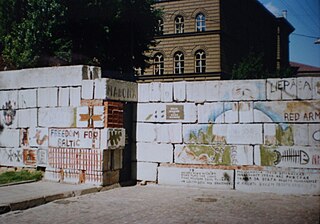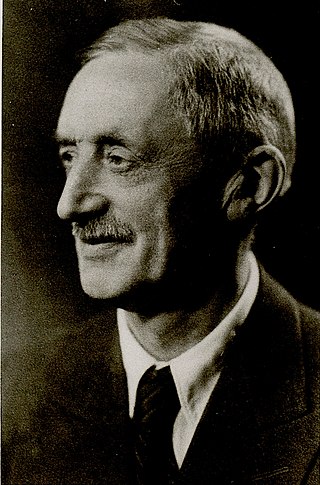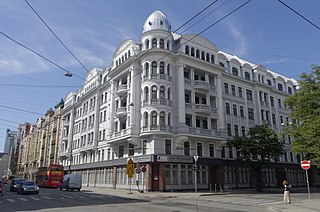
Riga is the capital, primate, and the largest city of Latvia as well as the most populous city in the Baltic States. Home to 609,489 inhabitants, the city accounts for a third of Latvia's total population. The population of Riga metropolitan area, which stretches beyond the city limits, is estimated at 860,142. The city lies on the Gulf of Riga at the mouth of the Daugava river where it meets the Baltic Sea. Riga's territory covers 307.17 km2 (118.60 sq mi) and lies 1–10 m (3–33 ft) above sea level on a flat and sandy plain.

VEF, Latvian acronym for Valsts elektrotehniskā fabrika, was a manufacturer of electrical and electronic products in Riga, Latvia. It was founded in 1919. Before World War II, it manufactured a large variety of goods, including Minox — then the world's smallest camera. After the war, it was the leading communication technology producer in the Soviet Union and the largest factory in the Latvian SSR.

Mikhail Osipovich Eisenstein was a civil engineer and architect working in Riga, the present-day capital of Latvia, when the city was part of the Russian Empire. He was active as an architect in the city at a time of great economic expansion and consequent enlargement, which coincided with the flourishing of Art Nouveau architecture. During the years 1901–1906, Eisenstein designed many of the best-known Art Nouveau buildings of Riga. His son, Sergei Eisenstein, became a well-known Soviet film director.

The Freedom Monument is a monument located in Riga, Latvia, honouring soldiers killed during the Latvian War of Independence (1918–1920). It is considered an important symbol of the freedom, independence, and sovereignty of Latvia. Unveiled in 1935, the 42-metre (138 ft) high monument of granite, travertine, and copper often serves as the focal point of public gatherings and official ceremonies in Riga.

The Barricades were a series of confrontations between the Republic of Latvia and the Union of Soviet Socialist Republics in January 1991 which took place mainly in Riga. The events are named for the popular effort of building and protecting barricades from 13 January until about 27 January. Latvia, which had declared restoration of independence from the Soviet Union a year earlier, anticipated that the Soviet Union might attempt to regain control over the country by force.

The National Library of Latvia is a national cultural institution under the supervision of the Ministry of Culture of Latvia. Its current main building is known as the Castle of Light. The National Library of Latvia was formed in 1919 after the independent Republic of Latvia was proclaimed in 1918. The first supervisor of the Library was Jānis Misiņš, a librarian and the founder of the Latvian scientific bibliography (1862–1945). The current building was designed in 1989 by noted Latvian-American architect Gunnar Birkerts (1925–2017), who emigrated to the United States and made his career there. It was constructed in the early 21st century and opened in 2014. Today the Library plays an important role in the development of Latvia's information society, providing Internet access to residents and supporting research and lifelong education.

The Government of Latvia is the central government of the Republic of Latvia. The Constitution of Latvia outlines the nation as a parliamentary republic represented by a unicameral parliament (Saeima) and the Cabinet of Ministers of the Republic of Latvia, which form the executive branch of the Government of Latvia.

Jānis Frīdrihs Baumanis was a Latvian, Baltic German architect. He was first professional Latvian architect. Baumanis designed the Riga Circus in 1888. He was responsible for a number of important public buildings of eclectic design constructed in the second half of the 19th century in Riga.

The Latvian War Museum is a military museum in Riga, the capital of Latvia.

Rudbārži Palace is a palace in Rudbārži Parish, Kuldīga Municipality in the Courland region in Latvia.
The Transport Accident and Incident Investigation Bureau is a government agency of Latvia that investigates transport accidents and incidents. It has its head office in Riga. It is functionally independent of the Latvian Civil Aviation Agency. The agency is under the direct supervision of the Minister of Transport and has been so since its creation.

Gulbene is a town in northeastern Latvia. It is an administrative center of Gulbene Municipality.
Aleksandrs Klinklāvs was a Latvian architect.
Paul Mandelstamm was a Baltic German-Jewish architect, working mainly in present-day Latvia.

Bernhard Max August Bielenstein was a Baltic German architect.
Aleksandrs Vanags was a Latvian architect.

The Supreme Court of the Republic of Latvia or the Senate of Latvia is the highest level court in the three-tiered court system of Latvia. It deals with criminal, civil and administrative matters. Its oversight is determined in the Constitution, the structure and competence of the court are established by the Act On Judicial Power. The Court consists of the Civil Cases Court, three departments, administration and two divisions, located in the Palace of Justice on Brīvības bulvāris, Central Riga.

Brīvības iela is the central street of Riga, the capital of Latvia. It is more than 12 km long, going through all of Riga from the historical centre to the outskirts.

Kaļķu iela is a street in the medieval old town of Riga, Latvia. The street begins at the central square Rātslaukums and goes to the North East as far as the boundary of the historical centre. Brīvības iela and Brīvības bulvāris form a continuation of Kaļķu iela.

The Corner House is a historic building in the city center of Riga, Latvia. It was known as the headquarters of the Soviet KGB in Latvia from 1940 to 1941 and from 1944 to 1991. The official address is 61 Brīvības iela.


















